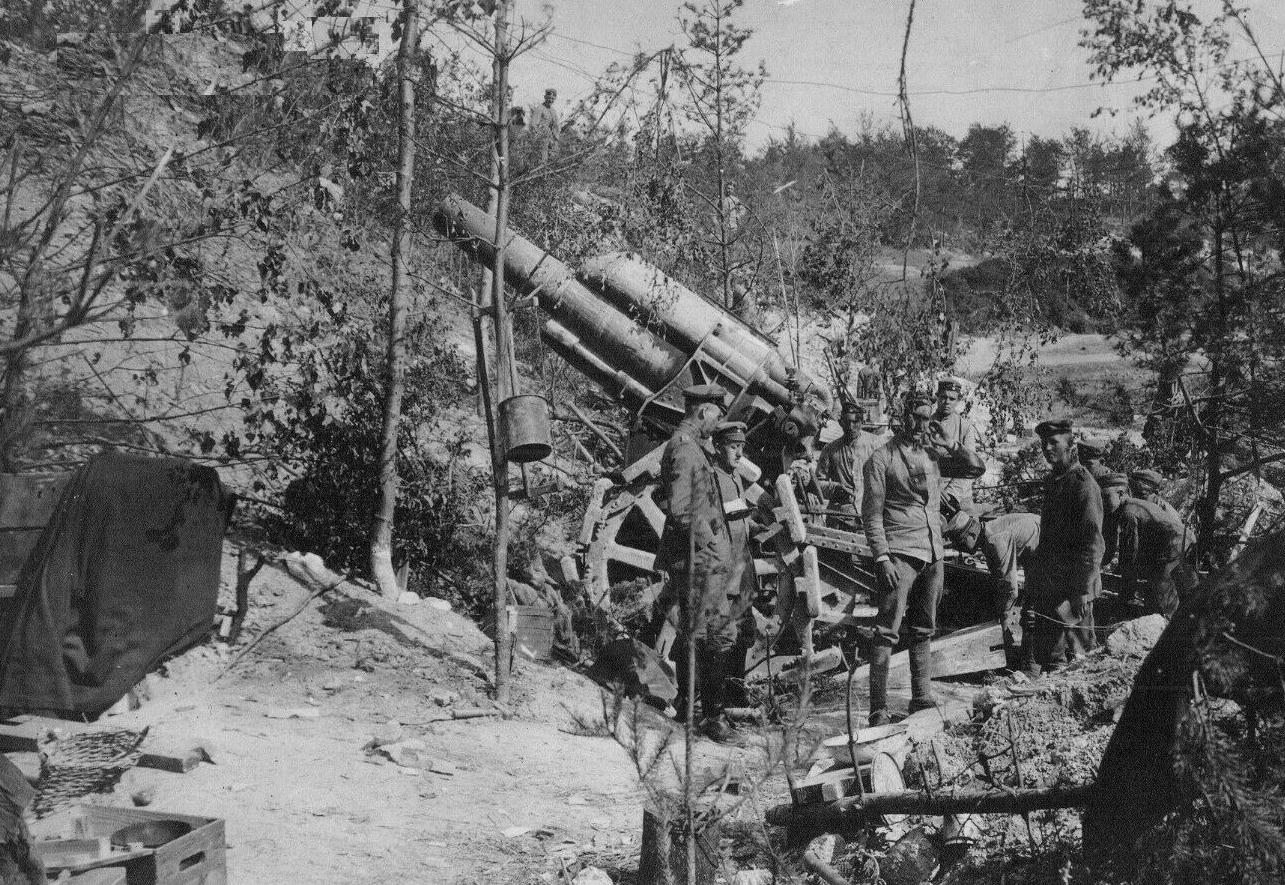
Figure 1.-- This postcard-back photograph shows a German World War I Heavy 210 mm mortar with the crew. Notiuce it was not a battery (multiple guns) and in a rather secluded firing position. We count 10 men. |

|
There are three basic types of artillery pieces. Field cuns also called cannons are mobile guns with high-velocity flat trajectories with short rnges that can accompny the infantry. The French 75 is the best exmpkle and playd a major role in slowing the German drive through Belgium (1914). A mortar is also a relatively short rnge gun which traditioinally is a heavier, less mobile gun with fires at an elevated trajectory. In World War II light mortors were developed that infantry could carry. This was not common in World War I. Field guns can best be used in mobile operations, but are of little use when attacking trenches. For this the mortar is needed. The third type of artillery is the howitzer. It is generally a the longest ranged artillery weapon that stands between a field gun and the mortar. Howitzers have fariable trajctories and fire heavy shells at long range. They are used to emgage targets beyond visible sight. The aerial recoconisance and radio/telephone communication brought the howitzer to the forefront in World War I. This meant that targets could be effectively targeted at considerable distance. The fact that aircraft did not yet have radios somewhat limited this, but the fact that positions on the Western Front were basically static meant that that there was a huge increase in the effectiveness of long range gunnery. They generally had short barrels and fired on a high trajectory, although not as high as mortars. They were effective weapons against both fortifications and trenches. Mortars had much shorter ranges than howitzers. Thernge increased during the War, but never much beyond 2 kilometers. The need for another type of artillery appeared during the War--anti-aircraft artillery. This became apparent when the Germans began bombing Britain with Zeppelins and the British did not have artillery that could reach the alduitudes that the Zeppelins could operate. As antui-aircrft atillery as devdloped, they tended to have similarcharacteristics of a field gun capable of pebnetratng armor. In World War II, one of the most capable artilery pieces was the Germann 88 which served as both an anti-tank and anti-aircraft gun. .
Navigate the CIH World War I Section :
[Return to Main World War I artillery page]
[Return to Main World War I fighting page]
[About Us]
[Aftermath]
[Alliances]
[Animals]
[Armistace]
[Biographies]
[Causes]
[Campaigns]
[Casualties]
[Children]
[Countries]
[Declaration of war]
[Deciding factors]
-------[Diplomacy]
[Economics]
-------[Geo-political crisis]
[Home front]
[Intelligence]
[Military forces]
[Neutrality]
[Pacifism]
[People]
[Peace treaties]
[Propaganda]
[POWs]
[Russian Revolution]
[Terrorism]
[Trench warfare]
------[Technology]
[Weaponry]
[Bibliographies]
[Contributions]
[FAQs]
[Images]
[Links]
[Registration]
[Tools]
[Return to Main World War I page]
[Return to Main war essay page]
[Return to CIH Home page]
